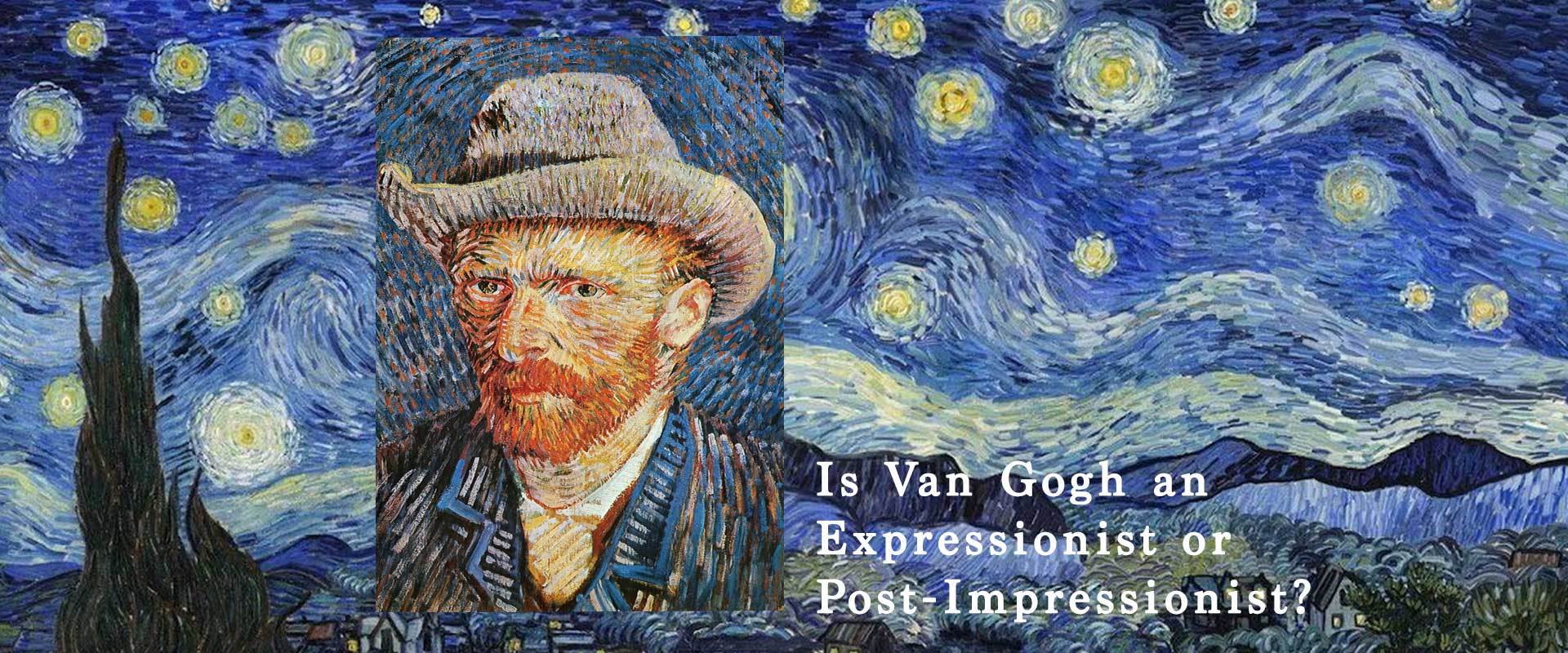Vincent van Gogh’s paintings are unmistakable—swirling skies, vivid colors, and emotional intensity. But when it comes to classifying his place in art history, many people ask: Was Van Gogh an Expressionist or a Post-Impressionist?
The answer isn’t straightforward. While he’s widely recognized as a Post-Impressionist, his influence on Expressionism is undeniable. Van Gogh’s style broke from tradition, challenged conventions, and paved the way for entire movements that followed. In this article, we’ll explore how Van Gogh fits into both labels—and why his art still defies simple categorization.
What Is Post-Impressionism?
Post-Impressionism was a movement that emerged in the late 19th century as a response to Impressionism. Artists like Paul Cézanne, Paul Gauguin, and Van Gogh sought to go beyond the fleeting impressions of light and nature, infusing their art with structure, symbolism, and emotion.
Key Traits of Post-Impressionism
- Use of vivid, often exaggerated colors
- Thick, textured brushwork
- Symbolic or emotional subject matter
- Stronger emphasis on composition and form
- Individual styles rather than a unified school
Van Gogh’s Sunflowers, Bedroom in Arles, and Café Terrace at Night exemplify this approach. He adopted the bright palette and broken brushwork of Impressionism but used it to express inner emotions rather than external reality.
What Is Expressionism?
Expressionism came later, developing in Germany in the early 20th century. Rather than depict the outside world, Expressionists focused on representing their emotional experience of it. Color, shape, and composition were distorted to evoke mood, anxiety, or psychological depth.
Key Traits of Expressionism
- Bold, unnatural colors
- Distorted forms and perspective
- Raw, emotional energy
- Themes of alienation, inner turmoil, and existential fear
Though Van Gogh died in 1890—before Expressionism formally began—his work deeply inspired artists like Edvard Munch, Ernst Ludwig Kirchner, and Egon Schiele.
How Van Gogh Embodied Both Movements
Van Gogh is officially considered a Post-Impressionist, but his influence reaches far beyond that label. His time in Arles and Saint-Rémy-de-Provence produced works that anticipated many Expressionist techniques—decades before they became mainstream.
Post-Impressionist Elements in Van Gogh’s Work
- Observational painting with emotional undertones
- Still life and landscapes with symbolic color
- Integration of Japanese influence and design
Expressionist Elements in Van Gogh’s Work
- The Starry Night: swirling skies reflecting mental unrest
- Wheatfield with Crows: tension, isolation, and foreboding
- Self-Portraits: raw vulnerability and unfiltered introspection
These paintings don’t just depict a scene—they reveal the emotional and psychological state of the artist, which is the very heart of Expressionism.
Why Van Gogh Is Not Strictly an Expressionist
Although his work heavily influenced Expressionism, Van Gogh is not classified as an Expressionist because:
- The movement hadn’t officially begun during his lifetime
- His subjects often remained grounded in the real world
- He never intentionally distorted form for abstraction
- He identified more with spirituality, compassion, and humanity than with angst or existentialism
Van Gogh was, however, the bridge between Impressionism and Expressionism—making him a key figure in the transition toward modern art.
His Legacy: Beyond Labels
Van Gogh’s significance lies not in a label, but in his emotional honesty. He used color and brushstroke to translate personal suffering and joy into visual poetry.
- He inspired Fauvism with bold color
- He inspired Expressionism with emotional depth
- He influenced Abstract art with form and movement
Van Gogh painted to feel, not to follow a school—and that is precisely why his work is so universal.
Conclusion
So, was Van Gogh an Expressionist or a Post-Impressionist? Technically, he was a Post-Impressionist—but his influence reaches far into Expressionism and beyond. He fused Impressionist color with symbolic meaning, paving the way for emotional and experimental art in the 20th century.
Van Gogh’s work doesn’t fit neatly into one movement because he wasn’t trying to. He wasn’t painting to belong—he was painting to survive, to communicate, to be understood. And in doing so, he changed the course of art forever.
To experience his revolutionary brushwork and emotional vision for yourself, browse our curated Vincent van Gogh wall art prints and bring a piece of his story into your space.
FAQs
Was Van Gogh officially an Expressionist?
No. Van Gogh died before Expressionism formally began, but his style strongly influenced the movement.
What makes Van Gogh Post-Impressionist?
He used Impressionist techniques but focused on emotion, symbolism, and structure—hallmarks of Post-Impressionism.
Which of Van Gogh’s paintings are Expressionist in style?
The Starry Night, Wheatfield with Crows, and many self-portraits show emotional distortion and intense psychological expression.
Did Expressionist artists admire Van Gogh?
Yes. Artists like Edvard Munch and Ernst Ludwig Kirchner cited Van Gogh as a major influence.
Why does Van Gogh defy art movement labels?
Because his style was deeply personal and intuitive. He painted his internal world, not just his surroundings, making his work resonate across multiple movements.





